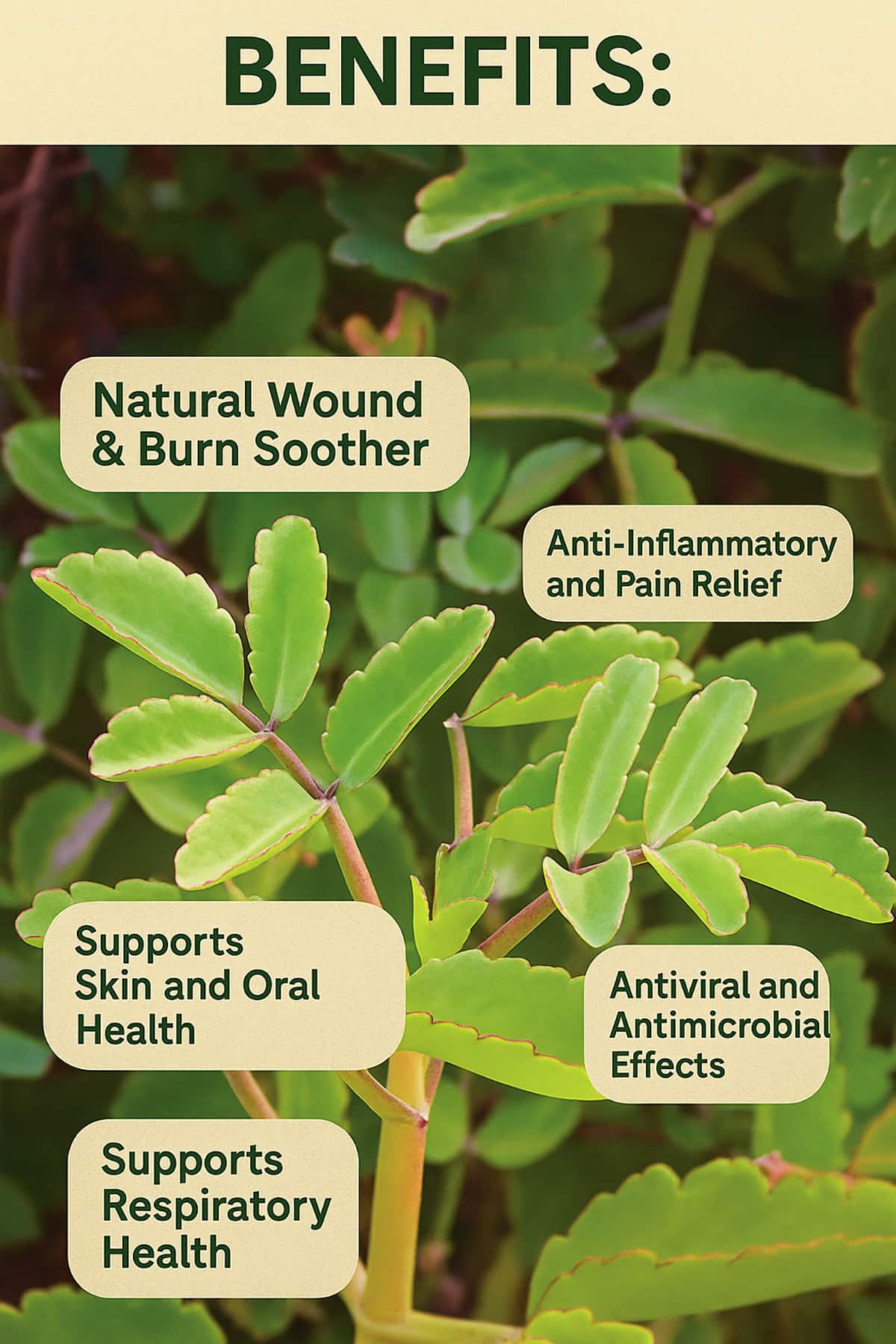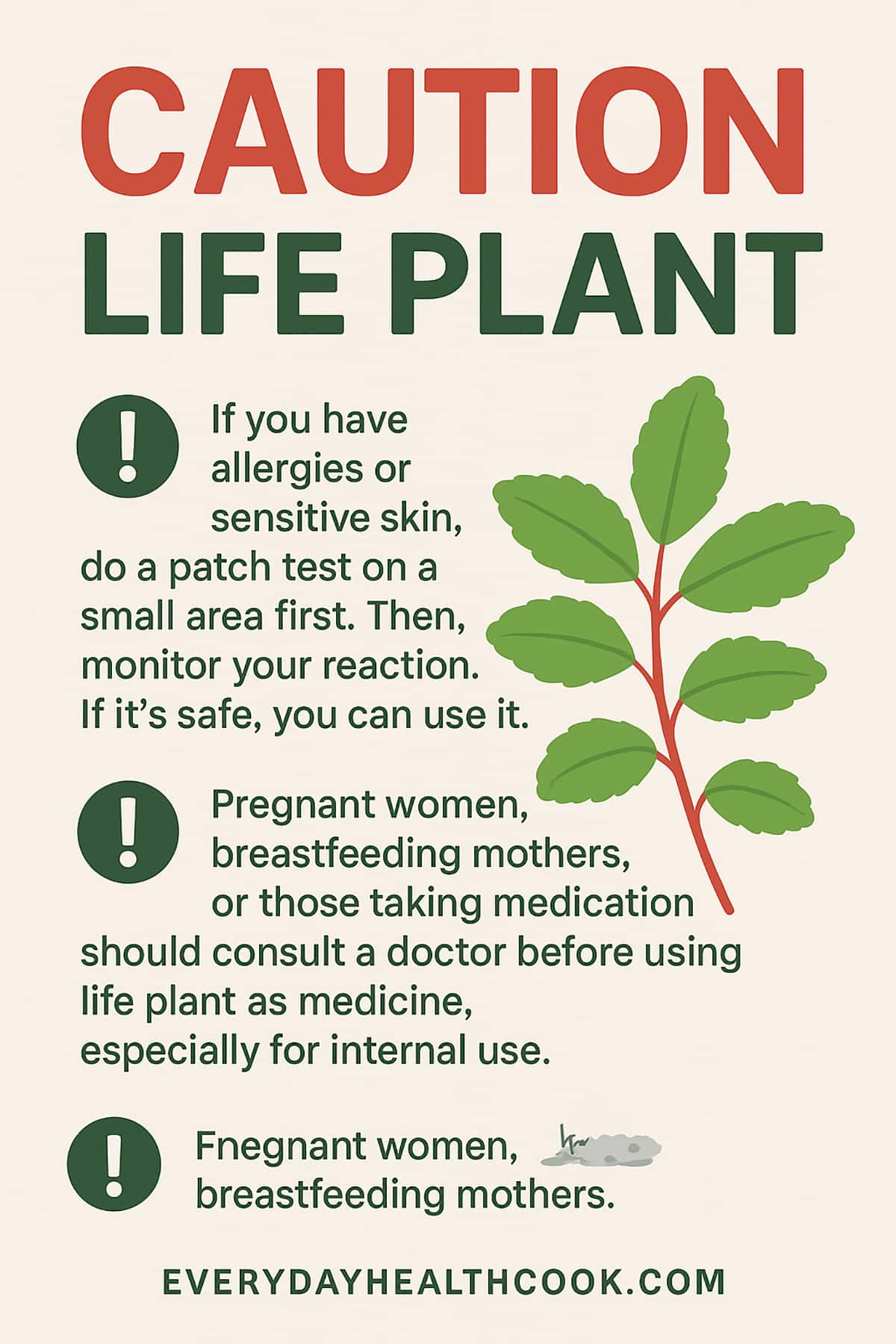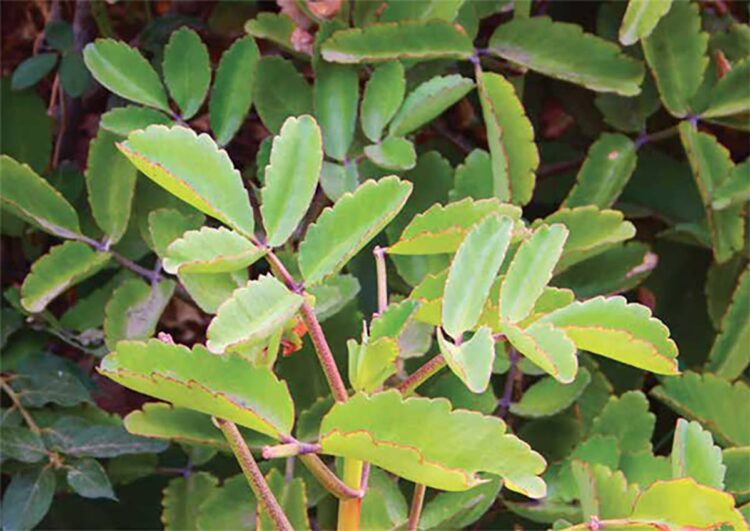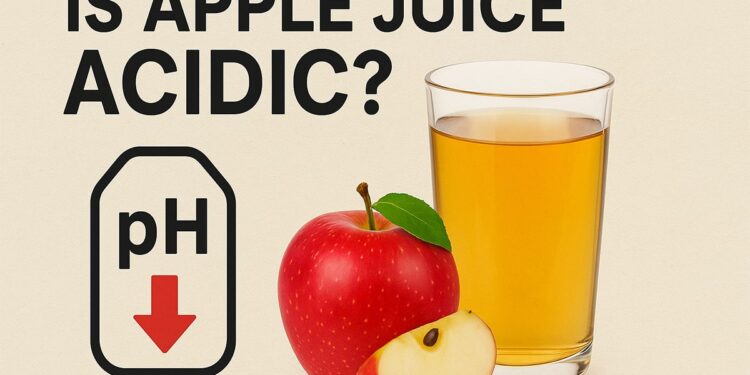Imagine you have a small succulent plant at home, decorating your home. This small succulent may seem inconspicuous, but one day you accidentally injure a leaf while watering it or while the kids are playing. What happens is, a gel oozes from the broken leaf. This is soothing, and even excellent for soothing sunburned skin. That’s one of the wonders and life plant benefits. I often say it’s a hidden miracle, a healing agent, and a cooking companion for certain recipes in your kitchen.
So, does this sound interesting? It is. I’ll explain more about this life plant, starting with its benefits and even its use in healthy recipes.
What Is the “Life Plant”?
Before I explain the Life Plant benefits in detail, let me first explain what a life plant is. This life plant is often referred to as Bryophyllum pinnatum, also known as the “Leaf of Life,” “Miracle Leaf,” or “Kalanchoe pinnata.”
This small succulent plant is known to originate from Madagascar, but is widely used in tropical and subtropical regions such as Jamaica, India, and parts of Africa as a medicinal plant and also used in food.
My Experience with the Life Plant
While visiting my grandmother’s friend last summer, I was sweating profusely from the hot tropical sun. Seeing my condition, she handed me a thick leaf of the Life Plant and gently rubbed it on my skin. She casually showed me how to rub it between my palms until a gel or liquid oozes from the leaf. This gel is what my grandmother used on my forehead to reduce and relieve the pain of sunburn.
The Life Plant gel felt cool and slightly sticky, and immediately relieved the throbbing pain I was experiencing. This was my extraordinary experience with the Life Plant, and I still remember it vividly today, leading me to write this valuable article.
Here, we look at some of the health benefits of this Life Plant. We hope this information is helpful to you all.
Life Plant Benefits

1. Natural Wound & Burn Soother
The gel contains anti-inflammatory and antimicrobial compounds, making it perfect for treating minor cuts, burns, and rashes naturally.
2. Anti-Inflammatory and Pain Relief
The benefits of the life plant are believed to address issues of swelling, pain, and can alleviate bruising from impacts as well as headaches. Some sources I read mention that the life plant is applied externally to relieve pain.
3. Antiviral and Antimicrobial Effects
Research on this plant indicates that extracts from the life plant demonstrate antibacterial activity against pathogens such as E. coli and Staphylococcus aureus, and even antiviral potential against HSV and RSV.
This demonstrates that the life plant has tremendous potential in the world of health, although more research is needed.
4. Supports Respiratory Health
There’s something unique about the life plant: Jamaicans and some other regions use it as an herbal tea or as an inhalant to relieve coughs, asthma symptoms, nasal congestion, and other respiratory conditions.
5. Promotes Skin and Oral Health
Anecdotal reports and herbal practitioners credit it with reducing skin melasma, aiding acne, and even promoting gum health when used as a gentle rinse.
With this information, it adds to the wide-ranging benefits and uses of this life plant. Many of us come across this plant but are not yet aware of its benefits and impacts on life. From its name alone, “Life Plant,” this plant reflects an extraordinary life companion, supporting human health and life in general. Thus, with this article, hopefully its benefits can spread to various circles.
Using Life Plant in Recipes
Want to try the flavor of this succulent plant? Here are some delicious and easy ways to savor this extraordinary plant, as we have gathered from various trusted sources.
1. Herbal Tea for Your Cough and Congestion
To make a remedy for congestion and cough, do the following:
- Wash 2-3 fresh life plant leaves.
- Tear into pieces and steep in boiled water for 5-7 minutes.
- Strain and drink—optionally sweeten with honey.
Tea made from life plant leaves is believed to alleviate coughs, clear phlegm, and soothe the throat.
2. Life Plant for Smoothie Booster
For those who enjoy healthy drinks like smoothies, you can add the gel from this plant’s leaves.
Smooth one sheet of life plant leaf, a handful of mint leaves, the juice of lime, and coconut water or plain water. It has a light taste and a grassy aroma; you can add tropical fruits for a refreshing drink. This beverage has great benefits in boosting the immune system.
3. Compress for Burns in Easy
To do this, do this: Warm a life plant leaf slightly (just enough to release its gel). Fold it and place it gently on minor burns or fresh wounds, securing it with a clean bandage.
Its anti-inflammatory properties act to quickly relieve burns, helping soothe and speed healing.
As a health-conscious writer, I want to make sure all advice is trustworthy. There are many health benefits of this plant, supported by preliminary scientific studies. Research shows antibacterial, anti-inflammatory, antiviral, and wound-healing properties (more research is ongoing).
Check out more:
- Froutosalata: Your New Favorite Greek Mixed Fruit Salad
- Sunsweet Prune Juice: Surprising Benefits and Quick Prep Tips You Need to Know
Important Note
If you want to use or ingest life plant benefits, we encourage you to pay attention to these points.
- If you have allergies or sensitive skin, do a patch test on a small area first. Then, monitor your reaction. If it’s safe, you can use it.
- Pregnant women, breastfeeding mothers, or those taking medication should consult a doctor before using life plant as medicine, especially for internal use.

Life Plant Benefits and Uses in table.
| Benefit | Traditional or Scientific Support | How to Use |
|---|---|---|
| Wound/burn relief | Yes, anti-inflammatory, antimicrobial | Apply fresh gel to skin |
| Headache & swelling | Traditional, some anecdotal | Warm leaf to apply externally |
| Antiviral & antibacterial | Found in studies | Use extracts or topical application |
| Respiratory relief | Jamaican traditional use | Drink as tea |
| Skin & oral health | Anecdotal, herbal use | Use gel topically or as rinse |
With the summary in this table, it is hoped that it will make it easier for you to understand the life plant benefits, nutritional content and how to use it.
FAQs
Q: What does “life plant benefits” actually refer to?
This refers to the therapeutic health benefits of Bryophyllum pinnatum, which include wound healing, anti-inflammatory, antimicrobial, and respiratory benefits.
Q: Can I eat the life plant in salads or just use it topically?
Yes, you can use it in salads and fresh smoothies. It tastes fresh and has a slightly grassy flavor. But always start with a small amount to ensure no allergic reaction.
Q: Is there scientific evidence for these benefits?
Several studies say that this plant validates each claim—antibacterial, antiviral, anti-inflammatory, and wound-healing properties have been documented. This is only preliminary research, and more clinical research is warranted. [healthiersteps]
Q: Are there any side effects or who should avoid it?
Use the life plant with caution, as some people may experience skin allergies. Pregnant women, breastfeeding mothers, and those undergoing medical treatment should consult a doctor before using this herb, especially for internal use.
Q: How do I grow my own life plant?
Because it has many health benefits and is often used in drinks, you’re probably wondering, “How do I grow a life plant?” It’s easy: just place a leaf in moist soil and expose it to indirect sunlight. Within a few days, small roots will begin to appear on the edge of the leaf.
Conclusion for Life Plant Benefits
This plant is rich in benefits, from my experience with my grandmother to modern medicine, smoothies, herbal teas, and more. Its many uses range from comfort to cooking. This small succulent quietly provides numerous health and culinary benefits.
Seeing its many benefits, why not try growing one in your kitchen or backyard? By growing your own life plant, your body will experience many benefits.














